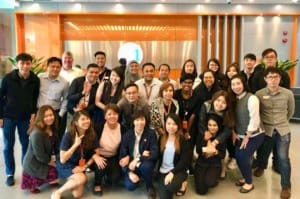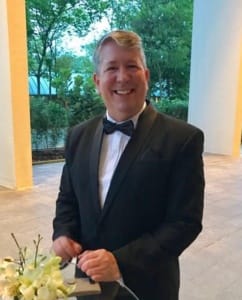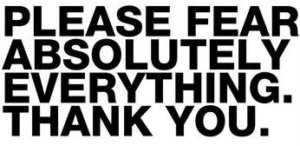This article is about how to learn more about Customer Experience and prepare for Customer Experience certification.
I share my experience helping thousands of Contact Centre & Customer Service professionals obtain industry certification and how those learnings apply to Customer Experience certification today.
Customer Experience certification
If you decide to pursue the Certified Customer Experience Professional (CCXP) Certification, there’s an important caveat.
You must apply to take the exam.
The following text is taken directly from the Customer Experience Professionals Association (CXPA) website:
Eligibility
“Anyone with a bachelor’s degree and three years of full-time CX-specific work experience is eligible to take the exam. An alternate pathway to eligibility is a high school diploma (or equivalent) and five years of full-time CX-specific work experience.”
Preparing for the Exam
“The Certified Customer Experience Professional exam is a 100-question test administered at convenient testing sites around the world. Eligible candidates should not need training or studying.”
That last sentence really struck me (highlighting is my own).
That last sentence implies that folks who successfully apply to take the exam will – by dint of experience – be able to pass the exam.
That there is no need to prepare for Customer Experience certification.
But passing a certification exam – purely by dint of experience – has not been my experience.
Let me explain.
Ten years of Contact Centre certification exams
Over the course of 10 years, I helped thousands of individuals around the world prepare to take the rigorous Call Centre Industry Advisory Council (CIAC) certification exams.
CIAC was comprehensive and targeted to the senior level.
The certification involved:
- No book, no notes, proctored examinations
- (4) domains of knowledge including Operations Management, People Management, Customer Relationship Management and Leadership & Business Management
- 60 – 100 complex multiple choice questions for each one of the 4 domains of knowledge (so 4 exams in total)
- Certification processes managed and awarded by a reputable non-profit association
And here’s what I learned from that long and rich experience.
The folks who attended our various workshops and subsequently passed the exams were smart, experienced leaders in the industry.
They were committed to growing and demonstrating their expertise.
And it didn’t matter whether they were from Hong Kong or Houston.
They shared that their ability to pass each exam was based on a combination of their experience + formalized know-how.
Both mattered.
The valued both, they benefited from both and they felt they could confidently apply both back at work.
Experience + Know-How.
I’d argue that this same formula applies to prepare for Customer Experience certification as well.
How I went from Contact Centre amateur to Contact Centre professional
The 3 Personas to prepare for Customer Experience certification
I see 3 Personas related to taking and passing a Customer Experience certification exam.
 Persona 1: A working professional who is likely to be approved to take the CCXP exam and who is likely to pass the exam without too much effort or study.
Persona 1: A working professional who is likely to be approved to take the CCXP exam and who is likely to pass the exam without too much effort or study.
I’d argue that Persona 1 is the rare bird across the 3 presented.
I’d list many Consultants (including myself) in this group.
Persona 2: A working professional who is likely to be approved to take the CCXP exam, but lacks exposure, experience or know-how around some of the competency areas.
Given the breadth of Customer experience know-how across the required (6) domains of knowledge that’s to be expected.
My advice for these folks is to review the competency blueprint and self-diagnose on areas of strength & weakness.
Books, webinars, articles, networking forums are all relevant solutions to close gaps.
And of course, if desired, a structured workshop that covers the competency blueprint.
Customer Experience is a big topic. Using a structured framework for your learning helps.
If you simply watch 10 webinars, read 5 books and follow 20 Linkedin articles, without a framework, you may find the overall experience confusing.
Persona 3: A working professional who is unlikely to be approved to take the CCXP exam, perhaps in Contact Centre or Customer Service (or other discipline!) looking to level up into Customer experience but lacks exposure, experience or know-how around competency areas required in the exam.
The person who works to proactively prepare themselves for the next step in their career.
In the Customer Experience world, they might be someone who’s currently in Customer Service or Contact Centre management, looking to make the move to Customer Experience.
My advice
My advice for these folks is to review the competency blueprint, self-diagnose on areas of exposure (or lack of exposure) and work with your boss to see how you can get real hands-on experience in that area.
And one of my favorite bits of career advice for this group in particular is:
Run to trouble.
By that I mean, step forward and see how you can help your Organization solve some kind of Customer experience problem.
There will never be a shortage of Customer Experience problems!
You’ll gain exposure and build a reputation as a problem solver.
And as with Persona 2, remember that a structured approach helps.
The volume of information and know-how around Customer Experience can be overwhelming – especially when you’re first starting out.
A structured workshop could be helpful to clarify competency areas and explain concepts – even if the actual certification process comes further down the road.
In the Customer Experience industry there is an added challenge
The tendency for organizations to rebrand job descriptions with the words ‘Customer Experience’ creates an added challenge.
Especially when the underlying job responsibilities and scope don’t change.
Someone once wrote to me that all Contact Centres should be rebranded as Customer Experience Centres.
I heartily disagree.
Yes – Contact Centres contribute to the overall Customer Experience – sometimes mightily so.
But in and of themselves they don’t represent the entirety of the Customer Experience.
You can point to a dog and call it a cat all you want. But that doesn’t make it so.
What you end up with are a lot of folks who have Customer Experience in their job title, don’t actually work in Customer Experience and who lack fundamental Customer Experience know-how.
Not a great hallmark for the Customer Experience industry.
It might be stretching it – but if you have Customer Experience in your job title, you’d best consider putting a recognized certification behind that.
In closing
I hope this short article has been helpful.
As with anything worth learning and doing – remember that it is about the journey and not just the destination.
We offer both a 2-day CCXP Exam Preparation Workshop and online CCXP Practice Quizzes that can help.
All the very best in your Customer Experience journey and as you prepare for Customer Experience certification.
Daniel

Daniel Ord





 So if you’re DHL, a major hotel chain or even McDonalds delivery – and your Customers still call you to place orders – you have to care.
So if you’re DHL, a major hotel chain or even McDonalds delivery – and your Customers still call you to place orders – you have to care. If the Service Level goes down during any interval – let’s say from 10:00 – 10:30 in the example shown here – the Customer wait time during that interval increases.
If the Service Level goes down during any interval – let’s say from 10:00 – 10:30 in the example shown here – the Customer wait time during that interval increases.
 95/5, 90/10, 100/15 – this level of Service Level objectives is typically associated with revenue generating Centres – or those that deal with life & death or mission critical issues.
95/5, 90/10, 100/15 – this level of Service Level objectives is typically associated with revenue generating Centres – or those that deal with life & death or mission critical issues.



























 “Hmmmm (they say to themselves) – how could I drag the calls today?”
“Hmmmm (they say to themselves) – how could I drag the calls today?”
 As I like to say when I transition into ‘guru’ mode – when your Agent achieves Quality – and it just feels right – then AHT will be what it will be.
As I like to say when I transition into ‘guru’ mode – when your Agent achieves Quality – and it just feels right – then AHT will be what it will be. Did you ever order chocolate lava cake for dessert in a restaurant? It’s delicious.
Did you ever order chocolate lava cake for dessert in a restaurant? It’s delicious.
 As the world increasingly becomes digital, Customers reach out to voice channels when their issue is complex or they are confused or unhappy with something.
As the world increasingly becomes digital, Customers reach out to voice channels when their issue is complex or they are confused or unhappy with something.

 When I was running large Centres in the U.S. back in the 90s, we purposefully hired our Contact Center Agents from places like McDonalds and Burger King.
When I was running large Centres in the U.S. back in the 90s, we purposefully hired our Contact Center Agents from places like McDonalds and Burger King.





